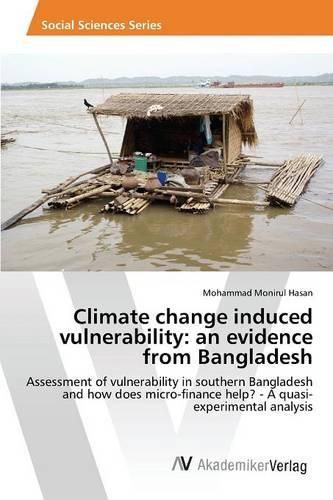Readings Newsletter
Become a Readings Member to make your shopping experience even easier.
Sign in or sign up for free!
You’re not far away from qualifying for FREE standard shipping within Australia
You’ve qualified for FREE standard shipping within Australia
The cart is loading…






This title is printed to order. This book may have been self-published. If so, we cannot guarantee the quality of the content. In the main most books will have gone through the editing process however some may not. We therefore suggest that you be aware of this before ordering this book. If in doubt check either the author or publisher’s details as we are unable to accept any returns unless they are faulty. Please contact us if you have any questions.
This study examines food consumption vulnerability of the extreme poor households in the southern Bangladesh and explore how micro-finance contributes to reduce vulnerability. Households in this areas are vulnerable to climate change. This study analyzes the economic impact of last two big cyclones such as Sidr and Aila . In finding the determinants of vulnerability, econometric analysis is performed using ordered probit model. Heckman two-step model is applied to test the sample selection bias in the model. In this quasi-experimental study, propensity score matching (PSM) technique is used to find out the impact of two big cyclones and also the contribution of micro-finance participation on vulnerability. Apart from finding the determinants of food consumption vulnerability, micro-finance participation is found to be the significant determinant in reducing vulnerability. It can reduce both 2 and 1 vulnerability by 2.3% point. In Propensity Score Matching (PSM) analysis, the impact is 8% reduction of vulnerability. Conversely, the last two cyclones increase the vulnerability by 8% to 14% point. The study also provides some short and long term policy suggestions for this area.
$9.00 standard shipping within Australia
FREE standard shipping within Australia for orders over $100.00
Express & International shipping calculated at checkout
Stock availability can be subject to change without notice. We recommend calling the shop or contacting our online team to check availability of low stock items. Please see our Shopping Online page for more details.
This title is printed to order. This book may have been self-published. If so, we cannot guarantee the quality of the content. In the main most books will have gone through the editing process however some may not. We therefore suggest that you be aware of this before ordering this book. If in doubt check either the author or publisher’s details as we are unable to accept any returns unless they are faulty. Please contact us if you have any questions.
This study examines food consumption vulnerability of the extreme poor households in the southern Bangladesh and explore how micro-finance contributes to reduce vulnerability. Households in this areas are vulnerable to climate change. This study analyzes the economic impact of last two big cyclones such as Sidr and Aila . In finding the determinants of vulnerability, econometric analysis is performed using ordered probit model. Heckman two-step model is applied to test the sample selection bias in the model. In this quasi-experimental study, propensity score matching (PSM) technique is used to find out the impact of two big cyclones and also the contribution of micro-finance participation on vulnerability. Apart from finding the determinants of food consumption vulnerability, micro-finance participation is found to be the significant determinant in reducing vulnerability. It can reduce both 2 and 1 vulnerability by 2.3% point. In Propensity Score Matching (PSM) analysis, the impact is 8% reduction of vulnerability. Conversely, the last two cyclones increase the vulnerability by 8% to 14% point. The study also provides some short and long term policy suggestions for this area.